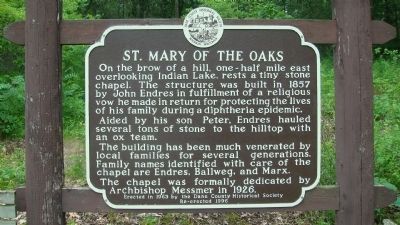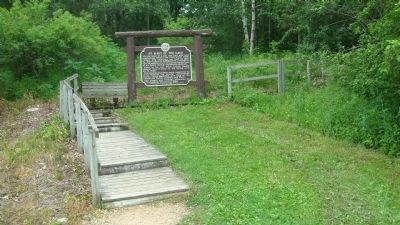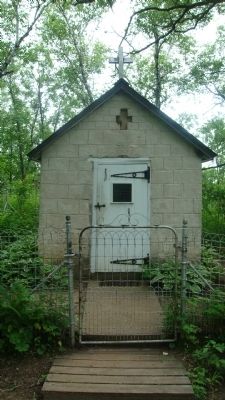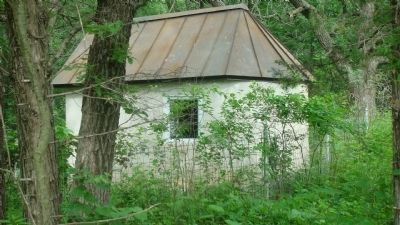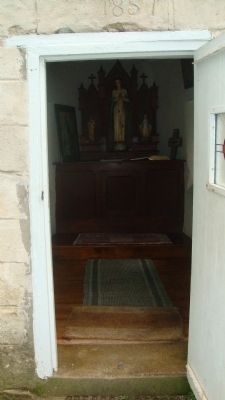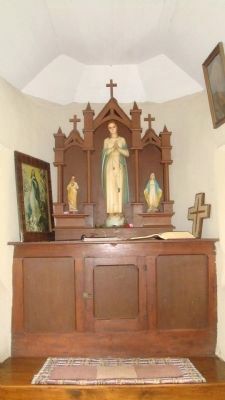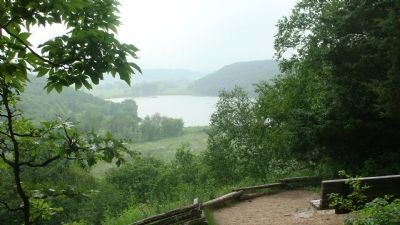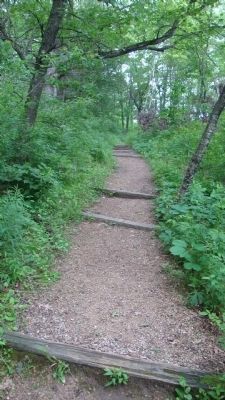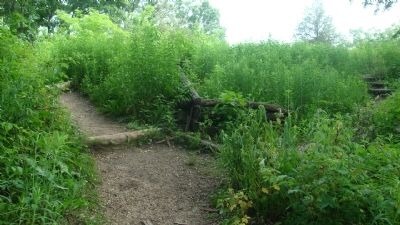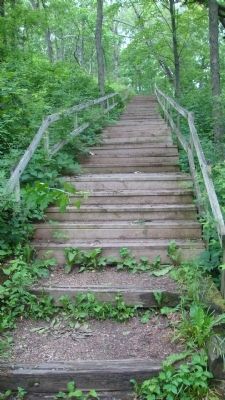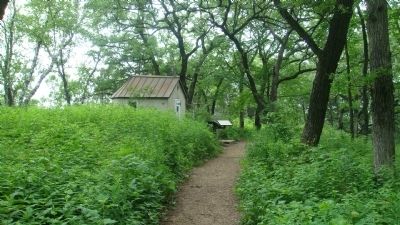Near Marxville in Dane County, Wisconsin — The American Midwest (Great Lakes)
St. Mary of the Oaks
Aided by his son Peter, Endres hauled several tons of stone to the hilltop with an ox team.
The building has been much venerated by local families for several generations. Family names identified with care of the chapel are Endres, Ballweg, and Marx.
The chapel was formally dedicated by Archbishop Messmer in 1926.
Erected 1963 by Dane County Historical Society. (Marker Number 1.)
Topics and series. This historical marker is listed in these topic lists: Churches & Religion • Notable Buildings • Settlements & Settlers. In addition, it is included in the Wisconsin, Dane County Historical Society series list. A significant historical year for this entry is 1857.
Location. 43° 11.377′ N, 89° 37.225′ W. Marker is near Marxville, Wisconsin, in Dane County. Marker can be reached from the intersection of State Highway 19 and Matz Road, on the left when traveling west. The marker is on the eastern end of the parking lot at Indian Lake County Park. Touch for map. Marker is in this post office area: Cross Plains WI 53528, United States of America. Touch for directions.
Other nearby markers. At least 8 other markers are within 6 miles of this marker, measured as the crow flies. Indian Lake (about 300 feet away, measured in a direct line); The Matz Farmstead (approx. half a mile away); Indian Lake Passage (approx. ¾ mile away); Kerl School (approx. 4 miles away); Father Adalbert Inama -- St. Norbert House (approx. 5.1 miles away); In Memory of Rev. Adalbert Inama, O. Praem. (approx. 5.1 miles away); The Plain Good Building of Cross Plains (approx. 5½ miles away); Haney's Tavern (approx. 5.8 miles away). Touch for a list and map of all markers in Marxville.
More about this marker. Marker was re-erected in 1996.
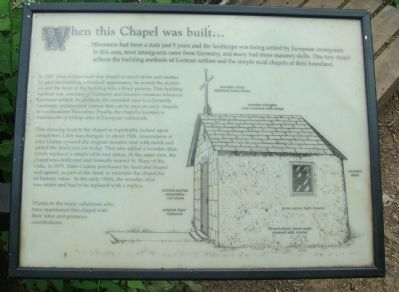
Photographed By William J. Toman, June 12, 2010
7. St. Mary of the Oaks Plaque
When this Chapel was built...Wisconsin had been a state just 9 years and the landscape was being settled by European immigrants. In this area, most immigrants came from Germany, and many had stone masonry skills. This tiny chapel reflects the building methods of German settlers and the simple rural chapels of their homeland.
In 1857, John Endres built this chapel of uncut stone and mortar. To give the building a finished appearance, he scored the mortar on just the front of the building into a block pattern. This building method was common in Germany and became common wherever Germans settled. In addition, the rounded apse is a distinctly Germanic architectural feature that can be seen on early chapels in southeastern Wisconsin. Finally, the chapel's location is reminiscent of hilltop sites of European cathedrals.
This drawing depicts the chapel as it probably looked upon completion. Little has changed. In about 1926, descendants of John Endres covered the original wooden roof with metal and added the fence you see today. They also added a wooden altar, which replaced a simple table and statue. At the same time, the chapel was dedicated and formally named St. Mary of the Oaks. In 1975, Dane County purchased the land and chapel for its historic value. In the early 1980s, the wooden altar was stolen and had to be replaced with a replica.
Thanks to the many volunteers who have maintained this chapel with their labor and generous contributions.
In 1857, John Endres built this chapel of uncut stone and mortar. To give the building a finished appearance, he scored the mortar on just the front of the building into a block pattern. This building method was common in Germany and became common wherever Germans settled. In addition, the rounded apse is a distinctly Germanic architectural feature that can be seen on early chapels in southeastern Wisconsin. Finally, the chapel's location is reminiscent of hilltop sites of European cathedrals.
This drawing depicts the chapel as it probably looked upon completion. Little has changed. In about 1926, descendants of John Endres covered the original wooden roof with metal and added the fence you see today. They also added a wooden altar, which replaced a simple table and statue. At the same time, the chapel was dedicated and formally named St. Mary of the Oaks. In 1975, Dane County purchased the land and chapel for its historic value. In the early 1980s, the wooden altar was stolen and had to be replaced with a replica.
Thanks to the many volunteers who have maintained this chapel with their labor and generous contributions.
Credits. This page was last revised on June 16, 2016. It was originally submitted on June 12, 2010, by William J. Toman of Green Lake, Wisconsin. This page has been viewed 3,859 times since then and 332 times this year. Photos: 1, 2, 3, 4, 5, 6, 7, 8, 9, 10, 11, 12, 13. submitted on June 12, 2010, by William J. Toman of Green Lake, Wisconsin. • Bill Pfingsten was the editor who published this page.
